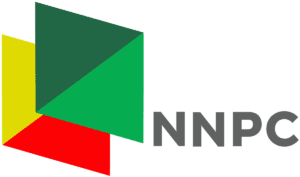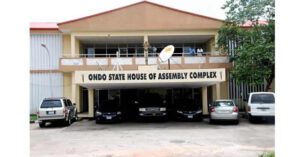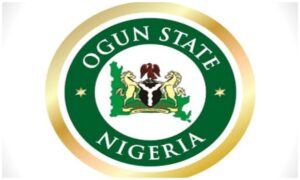
Nigeria needs more dams to control flooding in the country — DG, NIHSA, Nze
Engr. Clement Nze is the Director-General (DG), Nigeria Hydrological Services Agency (NIHSA). In this interview with Abba-Eku Onyeka in his office in Abuja he speaks at length on the need to build more dams in Nigeria, for among others effective controling of floodings in the country. Excerpts:
For the interest of our readers, can you briefly tell us the functions of NIHSA?
NIHSA, like any hydrological service in any part of the world, is the backbone of any development you can envisage in the water resources sector. That is the starting point of any developmental project in water resources and even non water resources projects. For instance, you want to carry out road projects, bridges, dams, irrigation facilities; maybe borehole drilling, hydropower development, airports, the issue of water flood challenges all over the world, it is in hydrology. That will give you the amount of water availability for you to undertake in any project under water resources. You can’t just site a dam, for instance; maybe hydropower, like Kainji, Jebba we have in Nigeria, without going through hydrological studies. So water resources development in the country surfaces at ground water. This is where you get the data for it. Hydrological services is applicable all over the world.
Can you tell us the latest development in this agency?
Following the 2012 flood incident in Nigeria, among other statutory functions or mandates of the agency, the agency had to think outside the box, to see a way in which it can be predicting and issuing early warning alert to the nation, with regard to flooding. The issue of flooding has become very current and serious in Nigeria. Year in, year out, so many lives are lost, properties and infrastructures destroyed.
In 2020, a state like Kebbi which is a centre of rice production in Nigeria and and equally the governor of Kebbi state, His Excellency, Senator Abubakar Atiku Bagudu is the national vice Chairman, National Food Security Council (NFSC) faced flooding issues; we helped with prediction; that is the latest I am talking about. We released the information early enough to all the states and local governments in Nigeria. Before you go out, we can tell you, what will happen in Orumba South. When the flood will occur, we shall show it to you.
How prepared is this agency in carrying out its mandates in 2021?
The Honourable minister of water resources, yearly, issues out warning to the public; it was on the 6th of May, 2021 that the minister, Engr. Suleiman Adamu made a public presentation on the state of Nigeria with regard to flooding. Flooding season in Nigeria is usually from the month of July, August, September and a part of October. That is the peak of it, all over the country. But in the south, mabe around June or a part of May.
So we have issued out the alert, by notifying the governors, about a week or two ago, the governor of Kebbi state to get some documents for him to prepare for the impending floodings in his state. Other governors are expected to follow suit, by notifying the honourable minister in writing. And we have press releases to update it.
Sir, as you know, flooding has always been a problem in this country. Can you in details, tell us what the agency has been doing to curtail it to the barest minimum?
In NIHSA, our mandate doesn’t extend to enforcement. Ours is advisory and we perform our own duties creditably well, by releasing information and seeing to it that the information gets to the grassroots. For instance in 2021, from our prediction, we are expecting that not less than 121 Local Governments (LGs) in Nigeria, getting across 27 states and the Federal Capital Territory (FCT) will be impacted negatively with flooding incidents in Nigeria in 2021. Additional 302 LGs will suffer another degree of flooding in the course of the year, 2021.
So we inform the people, notify them on what they need to do, to ensure that this prediction doesn’t catch them unawares.
In line with your mandates, you have been advising for more dams for effective flooding controls, electricity supplies, among others. But you haven’t come into clear terms on how many dams and whether large or small ones. Can you make it clear sir?
Nigeria doesn’t have enough dams, to be compared to other countries of the world. I don’t think that Nigeria has up to 400 dams. Maybe large dams of about 50; what we call large dams, depending on the height. A country like Canada has about 933 large dams. In some other countries, their own run into thousands, like China, India. United State has over 5,000 or thereabout. But in Nigeria, ours is far less than that.
To tackle the cost of the huge investments required to put a large dam, we advise that we should be building small dams across the major tributaries of Rivers Niger and Benue, and other big rivers in Nigeria, to reduce the amount of run-off that incidentally destroys the villages and kills some people too. So we are advising that there be more dams in Nigeria. If we can’t build for Rivers Niger and Benue, why can’t we build for their tributaries like for River Niger axis, we have River Rima; we have Sokoto River and coming down to River Benue axis we have Rivers Gombe, Taraba, Gongola, there are many of them there. So we can do more to reduce the amount of inflow into the major rivers. When we have all these dams, they serve a lot of purposes.
Is electricity supply one of the purposes?
Yes, it is. Like, we have what we call Gurrara Phase Two. When it was conceived initially, there was no hydropower component. Phase One was what was supplying water to the whole of FCT. Because of population increase in the FCT, Phase 2 came up. Apart from from water supply, the hydropower component had been added to it. There are other dams also that had no hydropower component in them and efforts are being made to incorporate them. If you go to Tiga Dam in Kano, either about 10mw are being incorporated into the dam.
I was in a stakeholders workshop in Calabar last week, organised by the United Nations Industrial Development Organization (UNIDO) and also Energy Commission of Nigeria (ECN). What they made available was that there should be as many as small hydropower plants built in Nigeria and our purpose of going to that place was to speak there, because the UNIDO and ECN know that this agency is quite important, when you come to hydrological aspect of project, because you can’t embark on hydropower without knowing the hydrology of the location in terms of the amount of water availability in the river you want to dam. Maybe you talk about certain characteristics; whether these areas are prone to situation that if you build a dam, within two years, the dam is filled with sand. So this is the kind of technology we are talking about.
Can Nigeria learn lessons from Cameroon in terms of controlling of flooding?
Cameroon began to build Lagdo dam between 1977 and completed in 1982. They advised Nigeria to do the same within Nigerian portion of River Benue. Unfortunately, ours has remained on the drawing table; what we call Dasa Hausa Dam. Dasa Hausa is a community in Fufure local government area, Adamawa state. Even in the event of Cameroon’s own having challenge, either by overflowing or any other problem, if in place, the Nigerian dam will be able to catch whatever is coming from there.
In 2012, they gave us information that they were going to release water from their Lagdo dam, but unfortunately, about three days to the date, the dam was overwhelmed in Cameroon, they had to open their gate, for national interest first. And moreover, if the dam should collapse it will be more disastrous to Nigeria, what we saw before was a child’s play, if the Lagdo dam in Cameroon has a serious problem; Adamawa state, all those Numan, Yola, mention them, come to Taraba, Benue will be affected seriously, because they had to open the dam to save its lifespan.
They did the same thing in 2019, when the rainfall has begun to cease in northern part of Nigeria. By October 10th, Cameroon opened their dam and by that time, rainfall ought to have ceased in the northern part of Cameroon, but because it still continued into October in 2019 in the northern part of Cameroon, the dam was overwhelmed, they had to open it for about three weeks. During the time that there is no more rainfall in the northern part of Nigeria, River Benue began to swell, we got call across Cameroon, several days, they were denying it. Between Sept 10 and 1st October, we opened our gate. By then, more harm would have done in Nigeria.
So Nigeria needs to revisit the issue of having a dam in River Benue. But in the interim, we can do a lot of small dams to reduce the amount of water that is emptied into River Benue.
Floodings are no more news in Anam and environs in Anambra state. Should the blame go to the federal or state government for failure to control the floodings?
Now I have to tell you that there is no dam in Anambra. Globally, what is being talked about is creating or developing resilience. I am talking about adaptation. Floods have come to stay, all over the world, not only in Nigeria and about 55% of natural disasters across the world are flood-associated.
Now what we do now is to develop resilience, to try to adapt; for instance, you talk about Anambra. We got our prediction in 2016. We wanted to come to the state, having seen the picture of what was going to happen. The agency was ready to pay for the hall and give money to the person in charge to help us invite the traditional rulers from LGs, to come and hear what we were going to say about their own locations, because we heard that some LGs were having problems. We told the Chief executive at that time, whom I have forgotten his name to set up a committee for that purpose, he said we shouldn’t come.
With such programme done in Igbo language across the communities, LGs, talking to the traditional rulers, leaders and the indigenes, with road shows, a few thousands of Naira, if not millions would have been spent in Anambra, within that catchment, because we would go to the market and eat. And again, once it is your mandate and we saw the challenges, we said that we would be coming back again in 2018.
The zonal director in Enugu travelled to Anambra to meet the then chief executive with a letter to be given to the traditional rulers, the man refused it. The day we eventually came, it was many students of the university and some other civil servants of different ministries that came. Few days after we left, Oko Ekwulobia, Isuofia, Obosi among others were submerged. If they had listened to us, this would have been averted. We left there on July 19, 2018, around 27, we began to read it on pages of newspapers. The heading was Willy Obiano’s home; former CBN’s governor, Solido’s home; former vice presiden’s home, submerged by water.
So as I said earlier, ours is advisory. We can’t enforce anything. There are many of them. Go to Ogbaru, Agulaeri axis, so many of them were affected.
Though yours is advisory, as against enforcement, but most say that poor funding hinders their performance. Is yours among them?
We are not exempted from the same problem. We have challenges of funding. Yes, we know that all over the country, there are many challenges. While we were battling insecurity which has taken a lot of our money to defend the territory of Nigeria; you know what goes on into the security aspect of Nigeria, the issue of COVID -19 came and so much funds have gone that way. So it has generally affected the country with regard to funds that are available to do a lot of work in the country.
But not minding that, the agency is still looking further for certain things to be done. We need professional vehicles, equipments, manpower training. The agency is suffering from aging staff; professionals who are retiring and going. There are no more capable hands, taking over. The government should do something to ensure that the equipment is bought and qualified people are employed to take over. Thank you very much.



